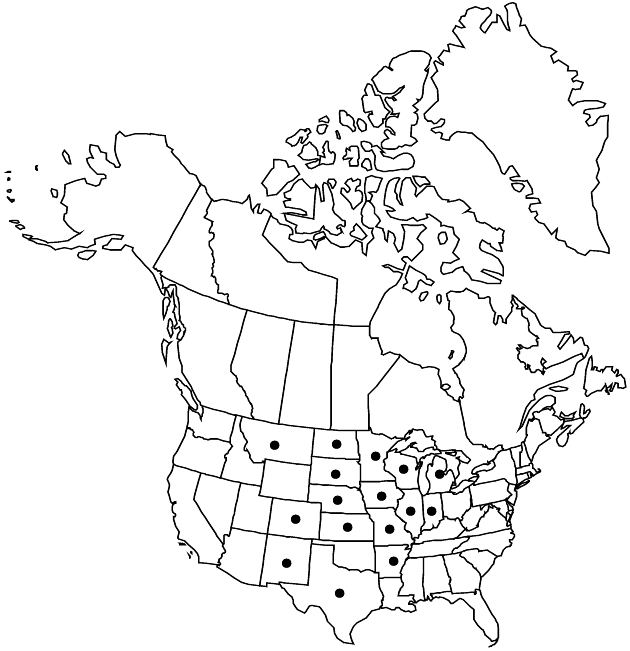Brickellia eupatorioides var. corymbulosa
Sida 4: 274. 1971.
Endemic
Basionym: Kuhnia eupatorioides var. corymbulosa Torrey & A. Gray Fl. N. Amer. 2: 78. 1841
Plants 30–200 cm. Leaves opposite; petioles 0–10 mm; blades 1-nerved or 3-nerved from bases, lanceolate to lance-linear, 5–90 × 2–15 mm, margins entire or coarsely dentate. Heads in paniculiform or corymbiform arrays. Peduncles 5–25 mm. Involucres 8–15 mm. Phyllaries green to stramineous, sometimes purple-tinged (lengths of outer to 1/2 inner, apices acute to acuminate, not contorted). Florets 15–35; corollas pale-yellow to pinkish lavender, 4.7–8 mm. Cypselae 2.7–5 mm. 2n = 18.
Phenology: Flowering May–Oct.
Habitat: Open areas, wide range of soils
Elevation: 200–2300 m
Distribution

Ark., Colo., Ill., Ind., Iowa, Kans., Mich., Minn., Mo., Mont., Nebr., N.Mex., N.Dak., S.Dak., Tex., Wis.
Discussion
Selected References
None.
Lower Taxa
None.
"fine" is not a number.
... more about "Brickellia eupatorioides var. corymbulosa"
introrse +
connate +
obtuse;acuminate +
scarious +
absent +
hirsute +
papillate +
continuous +
hairy +
acute +
lance-elliptic +
lanceolate;lance-linear +
(4-)5-angled;10-ribbed +
clavate +
stigmatic +
20;28 +
coarse +
absent +
not 2-lipped +
monomorphic +
10-ribbed +
prismatic +
2.7mm;5mm +
straight +
glandular-pubescent +
distinct +
proximal +
15;35 +
bisexual +
dispersed +
singly +
singly +
indeterminate +
homogamous +
surrounding +
cylindric;narrowly campanulate +
opposite +
cauline +
scarious +
2-carpellate +
inferior +
attached +
anatropous +
persistent +
glandular-pubescent +
tough +
thick +
connate +
nerved +
3-7-striate +
persistent +
distinct +
unequal +
equal +
Sida +
1971 +
absent +
epaleate +
flat;convex +
fibrous +
exalbuminous +
modifed +
4;6 +
Endemic +
alternate +
branched +
erect +
pubescent +
2-branched +
hirsutulous +
papillate +
Brickellia eupatorioides var. corymbulosa +
Brickellia eupatorioides +
variety +
cylindric +
perennial +